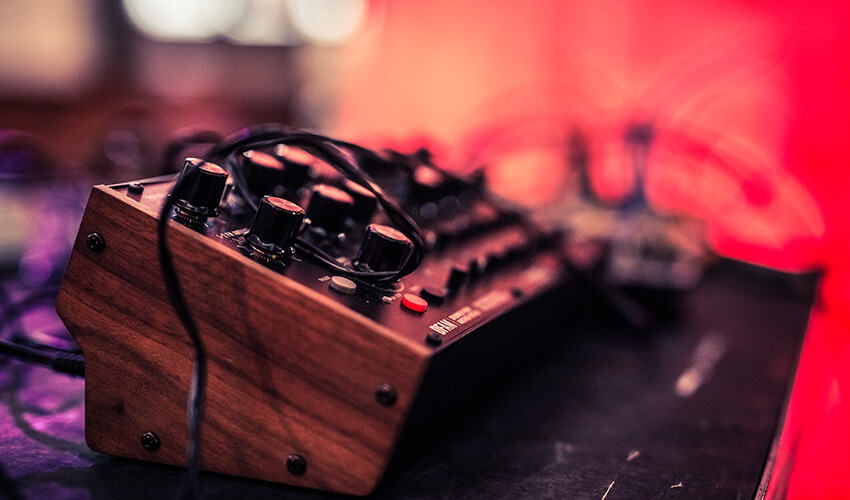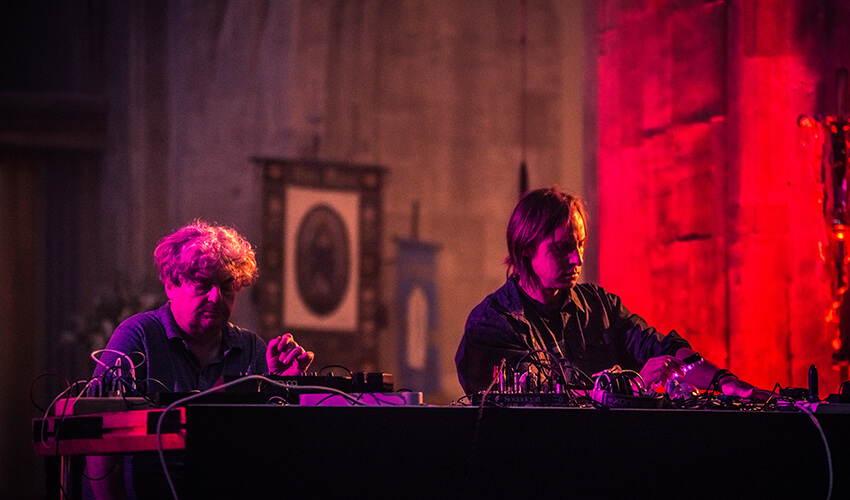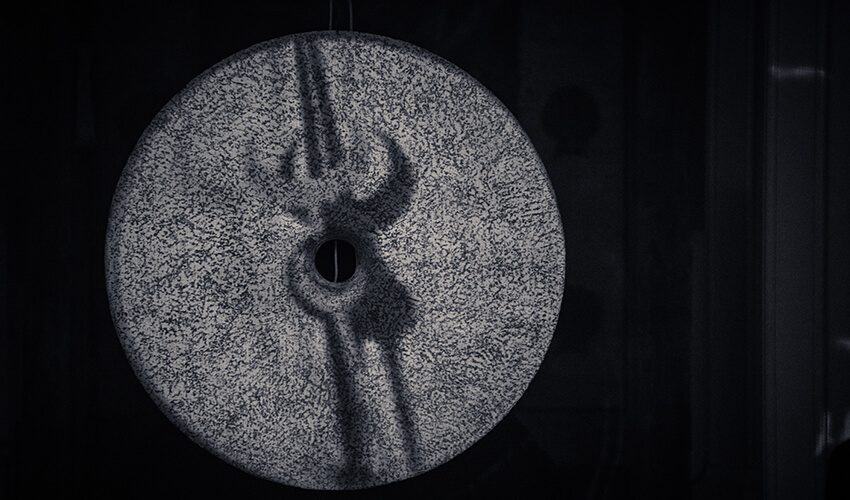Text by Agata Kik

We do not only use our ears to hear, but rather an act of listening belongs to the whole human body. Moreover, ‘to hear’ does not exactly mean ‘to listen’, as hearing happens automatically, while the second necessitates our conscious psyche. We can never completely shut the receptive body off from reverberations reaching it from beyond the skin, while to listen indicates being aware of vibrations passing through our porous physicalities. Exploring this topic further, in 1988 Pauline Oliveros coined the term ‘Deep Listening’, a concept to express listening in every possible way to everything one can potentially hear [1].
Oliveros was struck by this idea while recording in a big cistern, space where one can hardly distinguish direct from reflective sounds, a deep listening space, as she called it. While experiencing the simultaneity of time, perceiving the past sound like the current, which at once becomes the audible future, makes such a space an active partner in creating sound. Not only does a cistern create perfect conditions for a deep-listening practice, but also cathedrals or gothic churches possess these exceptional resonant and reverberant characteristics.
Having had ‘deep listening’ in mind or rather in the body, I could easily admit that St Matthias Church in Stoke Newington, North London, could not have been a better place to host Dronica #10, the festival’s 3rd year anniversary. Having opened these sacral interiors on the 9th, 10th and 11th of May 2019, festival curator Nicola Serra, once again provided the audience with space for sonic meditation and spiritual gathering, the experience of which Dronica has been famous for already, with some of its previous editions having taken place in the Old Church.
The new house for the Dronica-style music ritual, being built during the Gothic Revival years in the United Kingdom, undoubtedly accentuated the celebratory character of the event. The festival, eclectic in its nature from its birth, showcasing music from neoclassical to techno during each of its events, for this year’s anniversary, it exceptionally embraced the scores of sundry sounds. The tall columns culminating into pointed arches, immense stained-glass windows illuminating thin pews occupied by visitors, could not add more to this celestial spell, whose source was not a religious reflection for once, but an electronically amplified sound system.
Intensely resonant spaces feel other-worldly. Cathedrals or Gothic churches were constructed for this purpose, so that sound in them has an unearthly presence. During the festival, the church’s architecture accompanied each artist, who animated it through their performances. Causing even stone particles to shiver, simultaneously solidifying the gaseous inner atmosphere, Dronica #10 was predominantly a time of transcendence. Ideas of the physical and the ephemeral, the ethereal and the material, folded into each other and left one blind to their difference. The festival was. Thus, a chance to learn that to know more does not only mean to see wider but to listen deeper, to use also skin to perceive.

The 3-day-long event was triggered by Bill Thompson and Phil Durant, who energised the church’s walls, with drone buzzing permeating their polished rocks. We were sitting down, but nothing was still. The church’s pew vibrated so heavily as if palpating with its coarse claws my back leaning on it. SmallHaus, joined by Ian Faragher, enlivened the ambience with their mantrically moving music, swaying sounds like waves on calm seas. As a result, the air turned into liquid. Suddenly the reverbs reached their peak. The metal radiator squeaked. Explosion.
Then the exorcist-like noise and lament, came from Rick Jensen playing on the saxophone, combining electronics and performing with Fontelo, a movement artist. Shaking all those figures gathered in the present, revisiting the past skeletons and corpses, the duo brought the dark history back into its heavily charged home. As soon as the stage, or rather the chancel, was taken over by David Toop, the mostly heard sound was the silence itself.
The other’s breath sitting next to me or the wood planks cracking on the ceiling, could not be ignored during his improvised performance. In the end, listening to any kind of sound can be treated as an aesthetic act. Sculpting paper sheets to make them heard through the sound system or blowing air into woodwind instruments to mould their resonance, collapsed the boundaries between sounds and solids, matter and music. When the difference ceased to exist, what persisted was only the energetic world orchestrated by the artist.
Before the electronic soundwaves dissolved into deaf air, the church’s doors were opened for the second festival day, but not for religious chanting, but for Ayankoko’s electronic scratching and Rupert Cervaux’s dynamically charged beats among other appearances. The next and the final day of this dreamy anniversary journey was set off by James Osland and Finn Kelvin-Evans, who took the listener on the last stretch of this aural trip. When in front of the altar Clive Henry touched the floor with his knees when his fingers got melted with the electrically-powered equipment, an invisible wave of lacerating sonic swirl submerged the ossified crowd of listeners.
Bones started to fracture, blood to boil, the palpitating heart stopped for one moment or so. Bang. Release. From a sensation of a panic attack, I landed up in an ethereal euphoria. When faced with a big sound system and an artist virtuously manipulating amplifying technology, there is no control over one’s physical sensation. Amplifying the mood or depressing the psyche, vibrations alter human states, from the physical straight into our mentality. Voices lost in the background, daily-life clangours, radio recordings, crashes or yelling, a sizeable analogue tape player was situated in the middle of the church’s stage.
With the help of a computer, its intensity was manipulated by kNN. His appearance oscillated between the materiality of a live performance and the virtuality of recorded sounds, instantly enlivening the present. Not to get too stuck in the earthly materiality of technological equipment, Li Yilei took the listener on an extra-terrestrial journey, during which a difference between the sound of a gong of a church or an experience of stellar shimmering was hard to tell, and there was no desire or need for it. What could not be seen or put into words found its safe place in the gathered inner beings, in our collective consciousness, which could have been experienced only once, only there and then, only in that church during Dronica #10.

Reverberation invokes the sacred, but what does happen when the sacral setting is reinforced by a sophisticated sound system? Technology turns out to bring the human closer to what was previously claimed to be inaccessible to those that do not believe in God. These days, the power of electrically-powered vibrations helps even atheists unconsciously knock on the heavenly doors. Nevertheless, we stay on the ground surrounded by matter. Even though Domiziano Masselli helped one to forget that storms end as peacefully as in his set. It was rkss, who reminded us of where we really belong to, i.e. the screen, Internet black hole, YouTube, and social media posts. The contemporary cacophony of digital gadgets and technological inventions set things in motion. They produce vibratory phenomena; they are the source of energy. When used in the right way, they serve the same purpose as music does.
How can we, thus, practice deep listening in our contemporary world when we are already far away from the church’s gate? Why would it even be worthwhile to slow down to listen in our rushed daily rotas? How can we listen deeply when the TV does not stop screaming? Why would we listen if the news pierces our ears? Maybe exactly this would help us survive the contemporary glitch, escaping all these out of tune messages?
To listen to them more deeply, to finally pay attention to their form that has until now sounded to us indifferently, might be a way to get closer to the earth, the truth that we could all share. Dronica is an empowering act, giving voice to a diverse group of art practitioners, giving a chance to all those privileged who can hear, learn more, to listen deeper. Dronica 3rd year anniversary, the event that marked an important point on the festival’s timescale, which has been additionally perpetuated in a printed publication especially for this occasion, leaves the visitor with nothing else to seek, but to wait for the next Dronica squeak.






